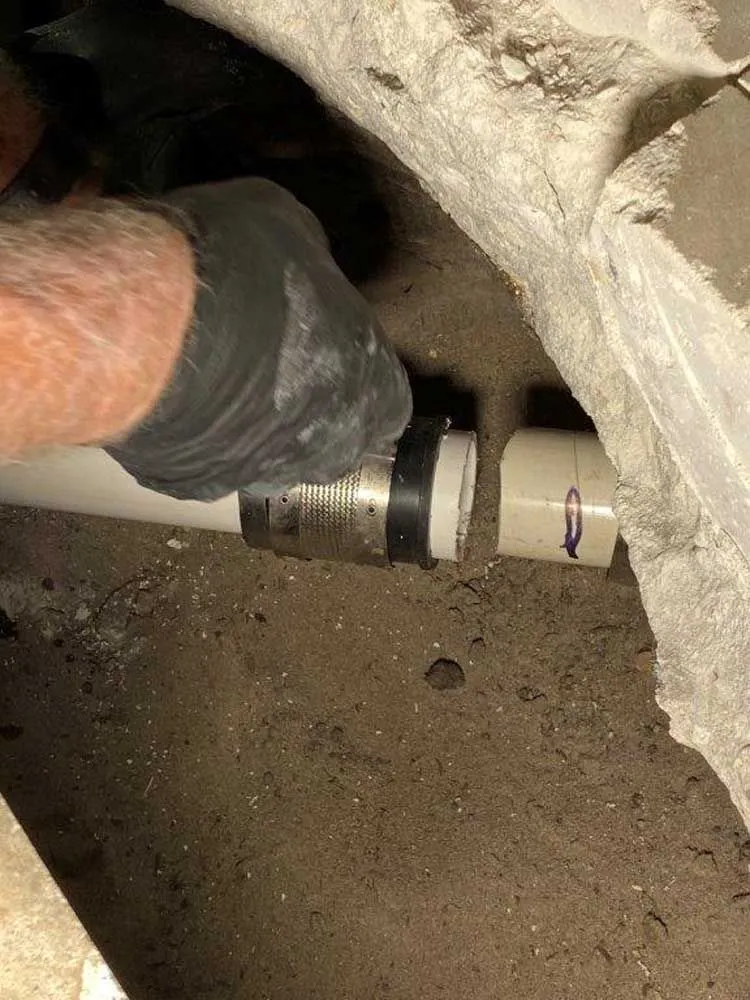Residential Plumbing Problems: Common Issues and How to Deal with Them
Plumbing is a vital element of any home, responsible for the efficient distribution and disposal of water. However, like any other system in your household, it is prone to problems and can malfunction, causing headaches and inconveniences for homeowners.
Plumbing issues can be frustrating to deal with, especially when they disrupt the day-to-day workings of your home. From leaky faucets to clogged drains, these problems can arise at any time, causing inconvenience and potentially damaging your property. However, understanding common plumbing issues and knowing how to deal with them can help you tackle these problems effectively. Let’s discuss some of the most common residential plumbing problems and provide tips on how to address them.
Leaky faucets
Leaky faucets are not only irritating due to the constant dripping sound, but they can also waste a significant amount of water over time.
The first step in fixing a leaky faucet is to determine the cause of the leak. Leaks usually occur due to worn-out rubber washers or faulty cartridges inside the faucet. By figuring out the type of faucet you have and its internal components, it will be easier to identify the problem and find a suitable solution.
If you have a compression faucet, which is the most common type, a worn-out rubber washer is usually the culprit behind the leak. To fix this, you will need to turn off the water supply to the faucet and then remove the handle and the packing nut. Inspect the old washer and replace it with a new one that matches the same size and shape. Reassemble the faucet and turn the water supply back on. Your leak should now be fixed!
Clogged drains
Clogged drains are a common plumbing issue that can be caused by a variety of factors, such as debris buildup, hair, soap scum, or foreign objects.
Identify the Cause – Before attempting any repair, it’s crucial to determine the root cause of the clog. Common culprits include hair, soap residue, food particles, and grease buildup. If you have a good idea of what’s causing the blockage, you can choose the most effective method to remove it quickly and efficiently.
Boiling Water – The simplest and often effective method to tackle minor clogs is by pouring boiling water down the drain. Boil water in a kettle or on the stove, and carefully pour it directly into the drain in three or four stages, allowing it to work for a few seconds between each pour. The heat should help melt away the grease and other materials causing the obstruction.
Baking Soda and Vinegar – A natural and environmentally friendly alternative to chemical drain cleaners is a combination of baking soda and vinegar. Start by pouring a cup of baking soda down the drain, followed by a cup of vinegar. The chemical reaction between the two will create foam, which helps remove gunk and residue clinging to the walls of the pipes. For best results, cover the drain after pouring and leave it for thirty minutes before flushing with hot water.
Plunger – For more stubborn clogs, a plunger can be quite effective. Fill the sink or tub with enough water to cover the rubber part of the plunger, creating a seal. Then, vigorously plunge up and down for about a minute. The suction and pressure created by the plunger can dislodge the blockage, allowing water to flow freely again.
Drain Snake or Wire Hanger – If all else fails, it may be necessary to physically remove the clog. This can be done using a drain snake, which is a long, flexible tool designed to navigate through the pipes. Insert the snake down the drain and twist it as you push it further in. Once you feel resistance, slowly and carefully pull it out, hopefully, entangled with the clog. Alternatively, if you don’t have a drain snake, you can straighten and bend a wire hanger to create a hook on one end. Insert this makeshift tool into the drain, twist it, and gently pull out any debris.
Running toilets
A running toilet can waste a significant amount of water and can often be traced back to a faulty flapper valve or a worn-out float mechanism.
The Flapper Fix – In many cases, a worn-out flapper is the reason behind a running toilet. To fix this, first, locate the flapper (a rubber valve at the bottom of the tank) and check for any frays, decay, or misalignment. If the flapper appears damaged, simply replace it with a new one. This is an inexpensive fix that will restore the balance between water inflow and outflow.
The Fill Valve Adjustment – Running toilets often result from the tank’s excessive water level that continually spills into the overflow tube. In such cases, adjusting the fill valve can reduce the water level to its appropriate mark. Experiment with the float or water level adjustment screw until you find the optimal position that stops the water from continuously running.
The Flush Valve Gasket Repair – If you’ve ruled out the flapper and fill valve as the source of the issue, the flush valve gasket may be to blame. Over time, this rubber seal can deteriorate, causing water to leak into the bowl and prompting the toilet to refill. Replacing the flush valve gasket with a new one will prevent water wastage and address the running toilet problem.
Additional Tips for Prevention – Prevention is better than cure, and the same applies to running toilets. Here are a few proactive steps you can take to avoid this problem altogether:
- Regularly check the toilet’s internal components for signs of wear and tear.
- Avoid using in-tank cleaning tablets, as the chemicals they release can deteriorate rubber parts.
- Gently handle the handle! Press it softly and avoid forcing it, as this can lead to flapper misalignment.
Low water pressure
Low water pressure can make everyday tasks like showering or washing dishes a hassle. One of the main culprits for low water pressure is a buildup of minerals or sediment in the aerator or showerhead.
Check all fixtures – Start by inspecting each faucet and showerhead in your home. Unscrew the aerators or showerheads and clean them thoroughly, removing any accumulated mineral deposits. Soaking them in vinegar overnight can help dissolve the buildup.
Clear clogged pipes – If you suspect clogged pipes are the issue, you can try flushing them out. Turn off the main water supply, open all your faucets to drain any remaining water, and then turn on the main valve for a short burst. This will create a high-pressure flow that can dislodge debris. Remember to close all faucets once you’ve finished.
Test the pressure regulator – To check if your pressure regulator is causing the problem, you’ll need a pressure gauge. Screw it onto a faucet or an outdoor hose bib and turn the water on. If the gauge reads significantly below or above the recommended pressure range (typically 40-60 PSI), it might be time to replace the pressure regulator.
Water heater problems
A malfunctioning water heater can lead to cold showers and inconvenience. If you are experiencing no hot water at all, check the pilot light or heating element (depending on the type of water heater) to ensure it is functioning correctly. If the water is not as hot as it should be, adjusting the thermostat might solve the problem.
Common water heater problems and practical guide to fix them.
No Hot Water
The absence of hot water is a frustrating problem. To address this issue, start by checking the power supply to the heater. Ensure that it is connected and receiving electricity. If the breaker has tripped, reset it. Additionally, inspect the thermostat settings, keeping in mind that sometimes they get accidentally turned down. If none of these steps solve the problem, it could be due to a faulty heating element or gas valve, in which case it might be best to call a professional plumber.
Insufficient Hot Water
If your water heater is producing less hot water than usual, several culprits might be responsible. Start by testing the pressure relief valve, which can become faulty or partially blocked with sediment, leading to insufficient hot water. Flushing the tank to remove accumulated sediment, a common issue in older heaters, can also improve performance. Furthermore, sediment buildup can impede heat transfer, so consider draining and flushing the tank annually for optimal results.
Leaking Water
Water leakage from the bottom or around the water heater is a cause for concern. This problem could signify a leaking tank or a faulty pressure relief valve. If the tank itself is leaking, it usually indicates that the structural integrity has been compromised, requiring a replacement. On the other hand, a leaking pressure relief valve might need replacement or tightening to ensure proper functioning.
Strange Noises
Banging, popping, or rumbling sounds produced by your water heater are often signs of sediment buildup in the tank. As water heats up, the sediment hardens and causes these unsettling noises. Flushing the tank to remove sediments can help eliminate this problem. If the sounds persist, it might be necessary to replace the heating element.
Smelly or Discolored Water
If your hot water has an unpleasant odor or appears discolored, bacteria or rust accumulation might be the culprits. For bacterial growth prevention, increase the water temperature briefly to 140°F (60°C) to kill them off. If the water is discolored due to rust or other contaminants, a professional plumber can flush and clean the tank to mitigate the issue.
When to Call a Plumber?
While small plumbing issues can often be fixed by the average homeowner, it’s important to know when it’s time to call in the experts. Attempting complex repairs without the necessary knowledge and tools can worsen the problem, costing you more time and money in the long run. When in doubt, it’s always wise to call a professional plumber to ensure a proper and lasting solution to your residential plumbing problems.





